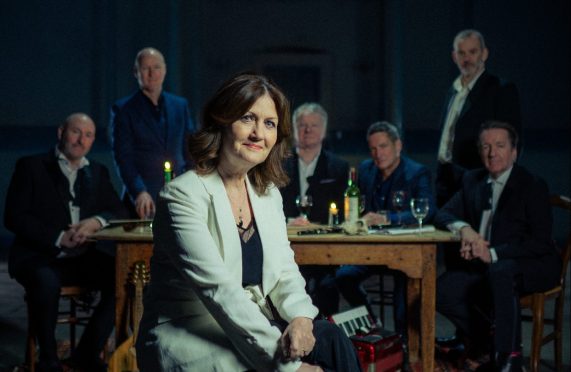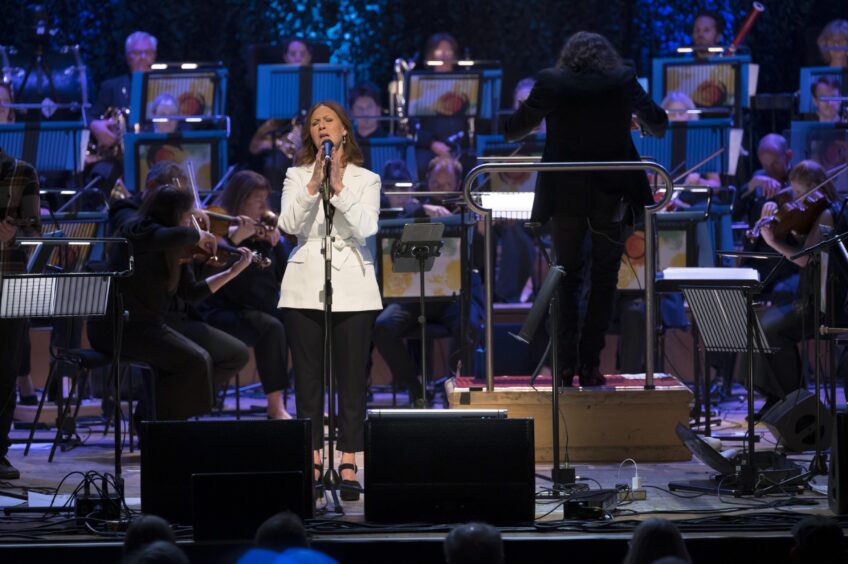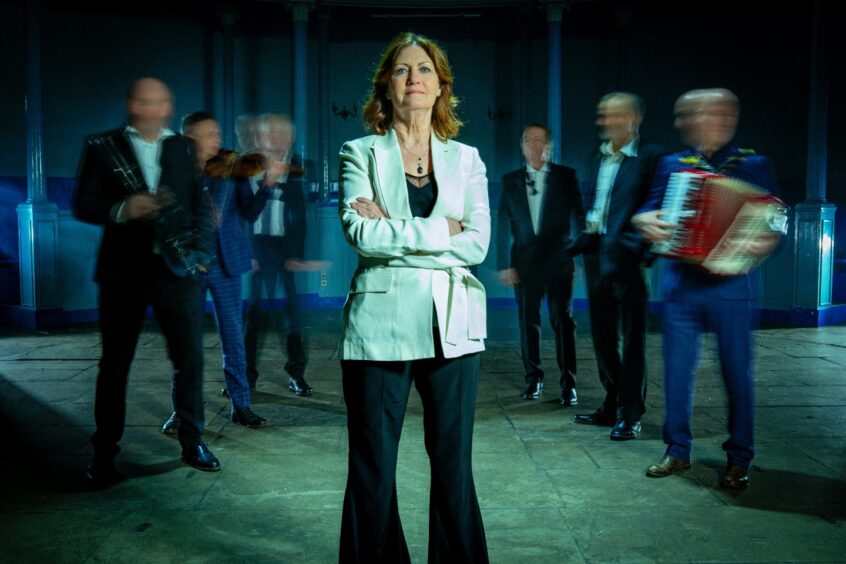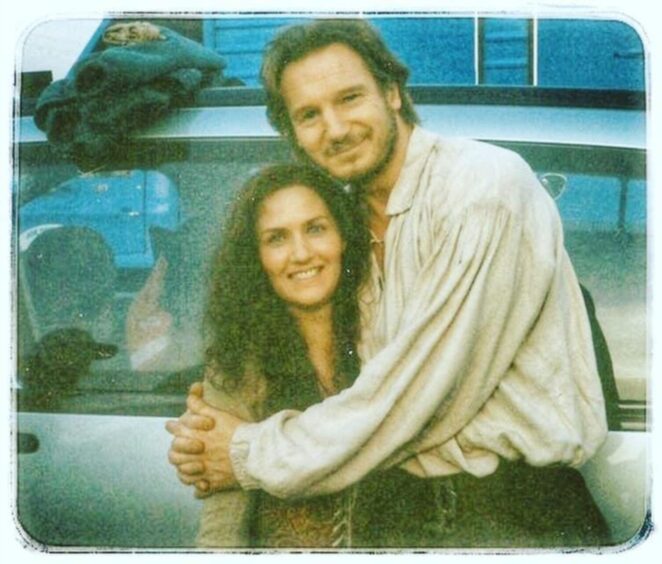
It is with a sense of disbelief that Karen Matheson sits down to chat about Capercaillie’s 40th anniversary. The thoughtful singer admits she had no expectations when she joined the band and expected it to be a short-lived bit of fun.
Instead, the group became one of the trailblazers of bringing traditional music and Gaelic song into the mainstream, performing around the world and opening the genre up to the many younger bands who have been inspired to follow in their footsteps.
“I never dreamed in a million years I’d still be doing this,” Karen smiled. “I was doing it very much for fun when we kicked it off.
“I thought it would be short-lived and then I’d go and get a real job, as my dad would say. And every so often I would take a step back and say, ‘OK, is now the time to give up and get that real job?’, but it never happened. We’re lucky to have kept going.”
While Karen never expected anything long-term from it, the same can’t be said for the band’s founder, Donald Shaw.
“Donald always had a vision,” Karen explained. “He was passionate about the band and what we could achieve with traditional music. There weren’t the bands around or the explosive scene that there is now, but he was hugely inspired by groups coming out of Ireland like Clannad and The Bothy Band. They were becoming more mainstream and he thought we could do something similar, that Scottish traditional music could be just as vibrant and relevant.”
Joining Capercaillie
It was equal parts opportunity and necessity that led to Karen being invited to join the group.
“They were an instrumental band and they had gone to Mull Music Festival and John Carmichael from BBC Radio nan Gaidheal heard them play in a pub. He asked them if they would do a session for radio, but could they find a singer,” Karen said. “They said, ‘We know the very girl!’ and they asked me to come along and perform. Donald got very excited as he was able to use his synthesiser, which would have been an innovative and strange thing to do with Gaelic song; it had a very exotic, ethereal sound. The radio broadcast was the first thing we did.”
While that might have been their initial gig, they knew each other long before then, growing up in Taynuilt, Argyll.
“We came from a community where ceilidhs and sessions in the house were the norm,” she said. “Donald’s house was always awash with music – his dad played the accordion and his mum played the piano. My dad, who came from Skye, played the accordion and I sang from an early age. We would be in and out of each other’s houses all the time, listening to music and playing records.”
Touring the world
Karen and Donald, who later married, moved to Glasgow where she says they became ensconced in the city’s 80s music scene at a time when bands such as Deacon Blue, Love And Money, Hue And Cry and Wet Wet Wet were coming to the fore.
But for Capercaillie, career opportunities didn’t present so close to home at first. Their first major tour came off the back of the radio session and saw them invited to perform in Cape Breton, Canada.
“There was a huge culture there and Gaelic was still spoken with a Highland brogue, despite most of them never having been to Scotland,” Karen said. “There was a healthy scene in America, too, and we’d go over there a couple of times a year.”
This was also the time of cultural exchange programmes, with the British Council sending Capercaillie to parts of the world where most bands don’t ever perform. “We spent three weeks in the Middle East. We played in the Hanging Gardens of Babylon, Palestine, Petra in Jordan; the most extraordinary places. We also went to Sudan, Brazil and way into the central regions.
“We went to places where people would never have heard music before, far less Gaelic music. These are opportunities we probably took for granted at the time and I would love to go back and revisit them now with a mature head on my shoulders.
“It did feel strange that we had to go further afield for an outlet to play, but then opportunities began to open up here, and Gaelic was starting to be taught in schools, and it’s evolved into an incredibly healthy and vibrant scene with festivals like Celtic Connections and that cross-fertilisation, for lack of a better word, with all the elements coming together and all the styles becoming integrated into the healthy scene we have now.”
Thriving trad scene
Bands like Peat & Diesel regularly sell out venues like the Barrowland and the annual Hoolie At The Hydro fills Scotland’s largest arena with a line-up of traditional music performers. Many of the bands playing these spaces acknowledge the likes of Capercaillie, who had the first Gaelic single to reach the Top 40, for leading the way.
Karen said: “We supported Runrig back in the day and they were pulling huge crowds. There was always the hope that would continue and grow, but to be honest I maybe didn’t have the same viewpoint as Donald. He had that vision and I think it’s been meted out when you see what’s going on now.”
The country’s reconnection with Gaelic is also part of the story, according to Karen.
“My mum was from Barra and it was her first language, but when she came to the mainland at 14 to work in hotels, it was seen as slovenly and frowned upon. She was from the generation told to lose their language, so I wasn’t fluent. My mum and grandmother who lived with us spoke to each other in Gaelic, so I picked up a lot, and my gran and a local teacher taught me the songs.
“Thankfully things have turned round and there are so many opportunities to learn now, including on social media. The upsurge in interest is great.”
On the big screen
Another factor was increased use of the genre in commercials and movies. One of the most famous and high-profile examples was Capercaillie’s music featuring in 1995 movie Rob Roy, in which Karen also had an on-screen role.
“I remember when we filmed the scene, we traipsed up the mountain at Fort William, got to the location and had our make-up done, got into position … and then the heavens opened. So we traipsed back down again, Liam Neeson and Jessica Lange included, and the day’s filming was cancelled.
“They just couldn’t get the weather right and so we ended up doing the scene in a warehouse in Perthshire and they managed to join it up with the beginning of the scene up the mountain. It cut to me singing, and Liam and Jessica sitting back listening.
“We were supposed to be using a playback, but Liam said, ‘Can she not do it live, for the atmosphere?’, so I did that, and it was quite magical. The whole thing was just extraordinary and memories like that are priceless. It was a surreal experience, as so much of our career has been.”
A new album is due for release and summer festivals are in the diary, and each band member has solo projects, too. Their 50th anniversary will be here before they know it.
“That would be incredible,” Karen smiled. “But we’ll see what the next 10 years brings.”
‘A labour of love to mark 40th’
To mark the band’s 40 years, Capercaillie are releasing a new album, Re-Loved, which features new arrangements of some of their best-loved songs, recorded with the BBC Scottish Symphony Orchestra.
“It was difficult to decide which ones to choose,” said lead singer Karen, once described by Sean Connery as possessing a “throat touched by God”.
“We tried to get a broad spectrum across the back catalogue. We were also dictated by which ones would orchestrate well. We sat down with the arranger, Greg Lawson, along with Donald, who also arranged, and narrowed it down.
“It was very much a labour of love to mark our 40th.”
The tie-up with a symphony began a few years ago with a gig in Glasgow, originally intended for Celtic Connections but delayed due to lockdown, and then the band was invited to Spain to perform with a Spanish orchestra and to France to work with a French symphony.
“Now we want to tour the world with it and perform with orchestras all over the world, so if anyone is reading this who can make that happen, that is our dream,” Karen laughed.
Re-Loved will be released on double vinyl on Friday and on streaming platforms on May 31

Enjoy the convenience of having The Sunday Post delivered as a digital ePaper straight to your smartphone, tablet or computer.
Subscribe for only £5.49 a month and enjoy all the benefits of the printed paper as a digital replica.
Subscribe © Sean Purser
© Sean Purser © Supplied
© Supplied © Supplied
© Supplied